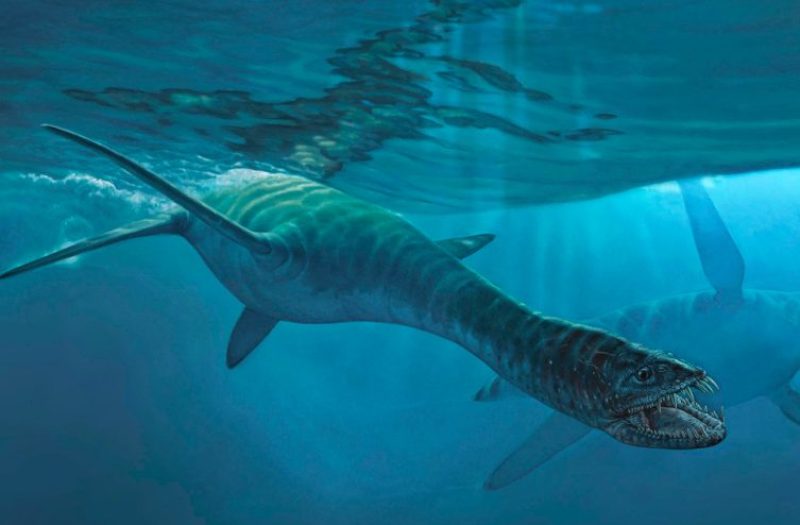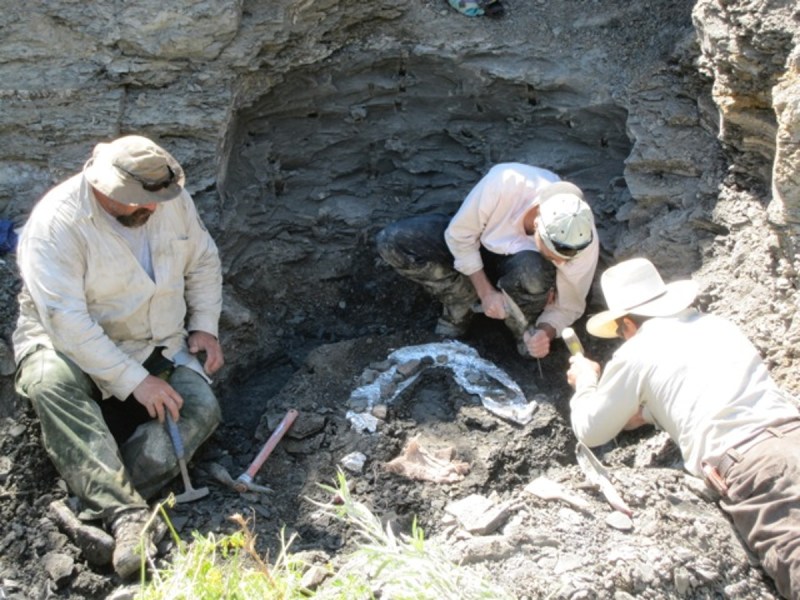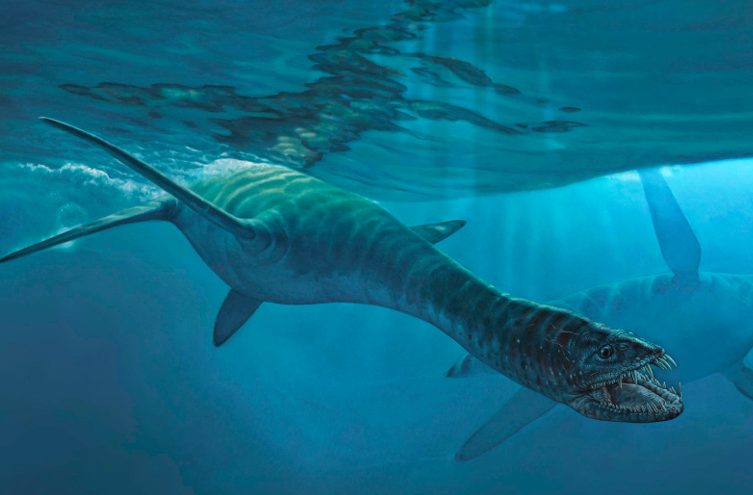
Seven years ago, elk hunter David Bradt found a fossil that he mistook for a triceratops. Scientists have now identified it as a prehistoric sea monster that is called Nakonanectes bradt.
This new specimen is a type of elasmosaur, which were carnivorous sea-dwellers with 18-foot-long necks. But unlike previously-discovered elasmosaur fossils, Nakonanectes bradti has a shorter neck—a mere 40 vertebrae long instead of the more typical 76 for the species.

Bradt’s find is one of the best-preserved elasmosaur finds to date, and it challenges established theories about how the species evolved over time.
The University of Alaska Fairbanks’ Danielle Serratos said that this fossil “provides evidence that … elasmosaurs did not simply develop longer and longer necks over millions of years of evolution.” In fact, because this fossil is also one of the youngest on record, the species may have evolved shorter necks over time.
—RealClearLife
This article was featured in the InsideHook newsletter. Sign up now.
























